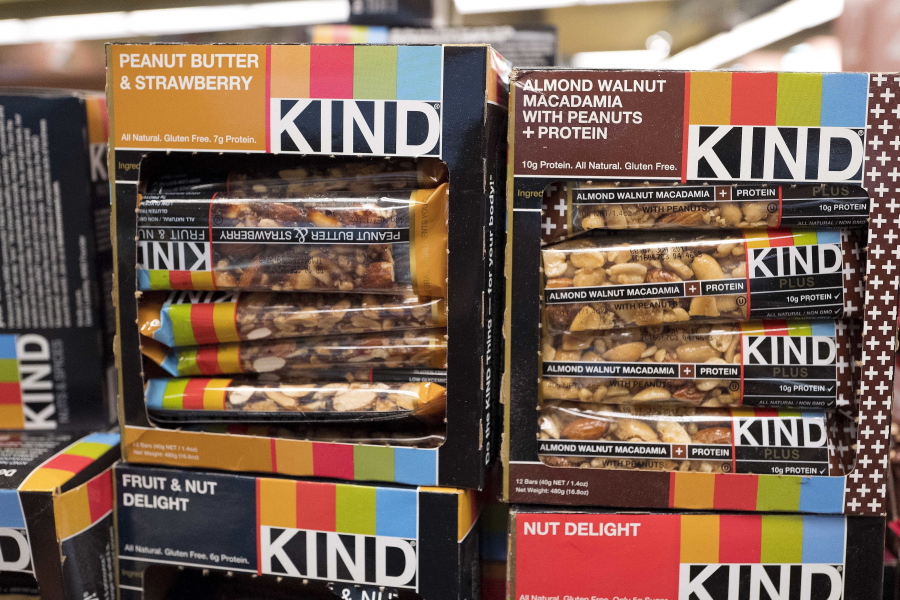NEW YORK — Pizza bagels, chewing gum and bottled water want to play a starring new role in our diets: Foods that can be called healthy.
The U.S. Food and Drug Administration is revamping its definition of healthy to reflect our changing understanding of nutrition science. The push is fueling debate about eating habits and what the new standard should say.
Frozen food-makers are seeking special rules for “mini meals,” citing little pizza bagels and dumplings as examples that might qualify. Chewing gum and bottled water companies say they should no longer be shut out from using the term just because their products don’t provide nutrients. Advocacy groups and health professionals are also weighing in, raising concerns about ingredients like sugar.
Some say the word healthy is inherently misleading when applied to a single product instead of an overall diet.
“The problem is that healthy is relative,” said Bruce Y. Lee, a professor of international health at Johns Hopkins. Subsisting on broccoli alone, for instance, wouldn’t be healthy.
The federal standards for use of the word “healthy” on labels was established in 1994 and set limits on total fat and cholesterol.
Susan Mayne, who heads the FDA’s food labeling division, said the definition reflects decades-old understanding of nutrition and needs to be updated.
With the revamp, she said people will be able to trust the word “healthy” is based in science, unlike many other terms on packages.
“This is one that the federal agencies will stand behind,” she said.
Nutty health
The government’s dusty definition of healthy came under scrutiny in late 2015, when the FDA warned Kind that its snack bars had too much fat to use the term. Kind pushed back, saying the fat came from nuts.
Since the rule was established more than two decades ago, nutrition experts have drawn a greater distinction between “good fats” like those found in nuts and “bad fats” like the trans fats in oils that are partially hydrogenated, an industrial process that gives foods a longer shelf life.
The link between dietary cholesterol and heart disease is also no longer clear.
Separate U.S. dietary guidelines, which are updated every five years, no longer set limits on total fat or cholesterol. They still recommend avoiding trans fats and limiting saturated fats, such as those found in meat and milk. Even the link between saturated fats and heart disease is now questioned .
Now sugar has become more of a concern, with some health experts saying our past fear of fat led to people gobbling up low-fat products high in sugar.
The shifting views reflect the pitfalls of nutrition science. Most food studies are based on links between what people say they eat and their health, which leaves the door open for flawed conclusions. Pinning down cause-and-effect relationships is harder.
It’s why the effort to redefine “healthy” invites debate. After launching the push in late 2016, the FDA received more than 1,140 public comments on the matter.
The next step is for the FDA to propose a new definition, which would be subject to public comment. The agency won’t say when it expects to establish a final rule.



